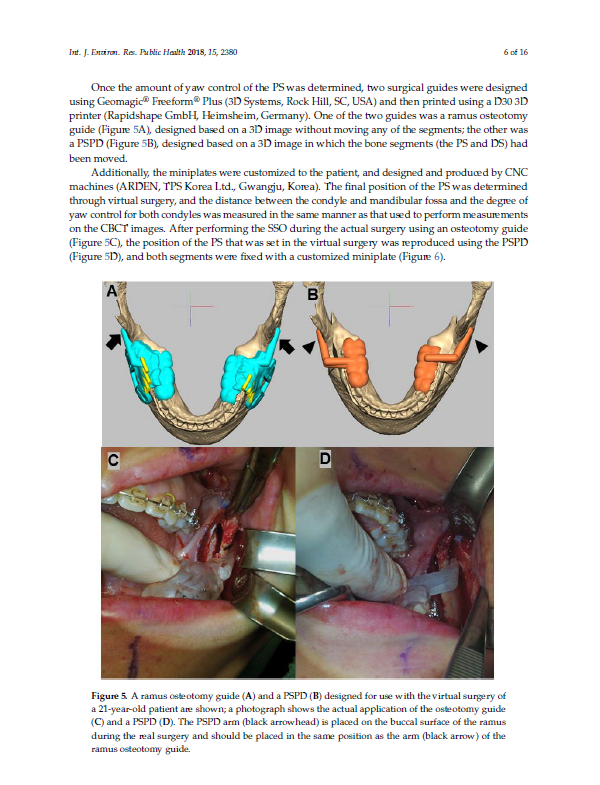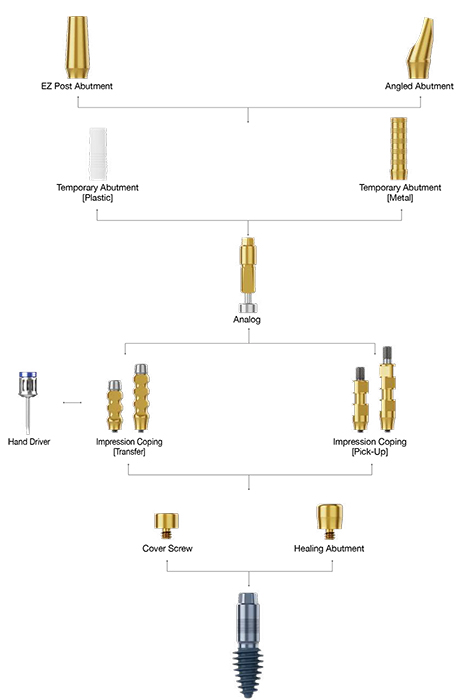Computer-Aided Surgical imulation for Yaw Control of the Mandibular Condyle and Its Actual Application to Orthognathic Surgery: A One-SYear Follow-Up Study
English 2022-08-23 PDF Lecture 300
Author
마케팅
Date
August 23, 2022
Abstract:
Background: Favourable occlusal interdigitation and an optimized position of the
mandibular condyle after surgery are essential for obtaining favourable results. The position of
the condyle is determined during the operation. However, it is difficult to maintain the condyle’s
original position post-surgery despite the efforts of the surgeons. Indeed, a degree of rotation of the
condyle is unavoidable, since it is difficult to verify whether the condyle is positioned correctly during
surgery.
Purpose: To maximize contact between the bone segments, the condyle was rotated around
the vertical axis using surgical simulations. We examined changes to the condyle-fossa relationship
after comparing virtual surgery to actual surgery.
Methods: From 2015 to 2017, 20 patients were
diagnosed with skeletal malocclusion and participated in computer-aided surgical simulation before
undergoing orthognathic surgery. In the simulation, the mandibular condyles were rotated around
the vertical axis, and the proximal segments were fixed to the distal segments using a customized
miniplate and positioning device during actual surgery. This study investigated the relationship
between the condyle and fossa using cone-beam computed tomography for several different time
periods (preoperative (T0), virtual surgery (Tv), postoperative three days (T1) and one year (T2)).
Results: The coronal and sagittal view exhibited significant differences in the mean values between
T1and T0, Tv, and T2 for all joint spaces. As a result of the distance, the mean value of T2 in both
the superior joint space (JS) and the lateral JS was significantly higher than that of Tv. In contrast,
the mean value of Tv in the medial JS was significantly higher than that of T2. Moreover, the mean
value of T2 on the axial plane was significantly larger than the values of Tv and T1. The mean value
of T0 was also significantly larger than those of Tv and T1, and the mean value of Tv was larger than
that of T1. Although the condyle was rotated, it exhibited a tendency to return to its preoperative
position. There was no statistically significant difference in functional evaluation between T0 and T2.
Conclusion: Our method of using yaw control for the condyle during virtual surgery and transferring
this technique to the actual surgery can improve the conventional surgical technique by positioning
the proximal segment in a pre-planned position, thus achieving optimal results.
Keywords: craniofacial; computer-aided simulation; virtual surgery; orthognathic; cone-beam
computed tomography















